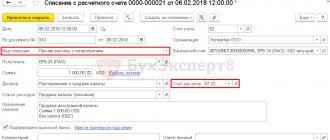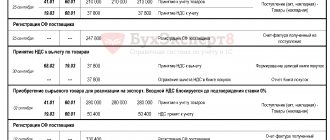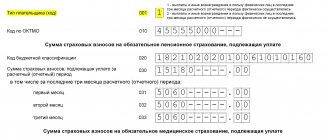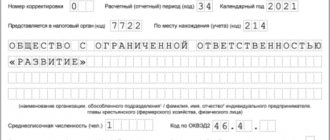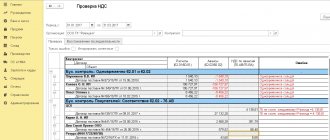Statistics on import and export of waste paper
The Russian market for recyclable materials is gradually transforming, but not yet at a fast enough pace. In Russia, about 15% of waste paper is recycled, and the rest is not recycled due to the lack of sufficient equipment. A significant share of unprocessed raw materials is supplied abroad. And in other countries there is a demand for Russian waste paper, and it is growing. Many companies produce products from domestic recycled materials. Thus, Russia exports waste paper to Asian countries, the CIS, and foreign countries.
But the main countries receiving Russian exports are:
- Ukraine – 56%;
- Belarus and Uzbekistan – 9% each;
- Germany and Finland – 7% each.
Imported waste paper is brought from Belarus (68%) and Kazakhstan (29%).
ATTENTION! We work only with legal entities.
Interestingly, Ukraine actually exports approximately 80% of waste paper from the total volume of Russian exports. Cunning logistics schemes are used to import waste paper into Ukraine; routes are laid through Belarus or the European Union. The bottom line is that in Russia the cost of waste paper is higher than in the EU. But the higher the cost, the higher the VAT that Ukraine returns. And the return is paid from the budget of the Russian Federation. At the same time, Ukraine produces toilet paper and cardboard from Russian recycled materials at its factories, and most of the products, about 80%, are returned to Russia and sold for rubles.
Due to the use of such schemes, on September 11, 2015, a resolution was adopted to introduce a temporary ban on the export of waste paper, but the ban lasted only 4 months. They also planned to introduce an export duty, but have not yet done so.
At the moment, the issue of banning the import of waste paper into Russia is being considered again. This is carried out with the aim of developing our own industry for processing waste and secondary raw materials. However, this issue has not yet been worked out and there is no final solution.
In 2022, Russia took ninth place in the global ranking in terms of waste paper export volumes, exporting about 368 thousand tons worth $71.8 million. Import volumes are significantly lower. Over the same year, Russia imported less than 19 thousand tons of recyclable materials worth $3.5 million. This allowed it to take 30th place in the ranking of importers.
Purchasing waste paper
Procedure for purchasing waste paper:
Create an Agreement with the appropriate settings.
If an organization purchases waste paper from a VAT taxpayer and performs the duties of a tax agent, then the agreement with the Supplier must indicate that the organization acts as a tax agent for the payment of VAT. In the form of an agency agreement, select Sales of goods (clause 8 of Article 161 of the Tax Code of the Russian Federation).
Figure 3 — Agreement with the Supplier
Make an advance payment to the Supplier (if any).
The VAT rate and the VAT amount are not filled in in the Write-off from the current account.
Figure 4 - Write-off from current account
View transactions and entries in registers.
The resulting wiring was DT 60.02 and KT 51 - 5,000 rubles. — amount of advance payment.
Figure 5 — Postings of the document “Write-off from the current account”
Register an invoice for the advance payment from the Supplier.
In the document “Debits from the current account”, click the Create button based on
, select
Invoice received
.
Figure 6 - Creating an invoice from the document “Write-off from current account”
The invoice type will be Advance
.
Transaction type code 41
- deduction from the buyer of the amount of VAT calculated when transferring the prepayment. The amount will be indicated including VAT.
Figure 7 — Invoice received for advance payment
View transactions and entries in registers.
The following wires were generated:
- Dt 76.AV and Kt 68.52 - the amount of VAT calculated by the buyer when performing the duties of a tax agent from the prepayment amount;
- Dt 68.52 and Kt 76.VA - for the amount of VAT accepted for tax deduction as a buyer who has made an advance payment.
Figure 8 — Postings of the document “Invoice received for advance payment”
An entry about the invoice is made in the “Invoice Journal” register.
Figure 9 — Register “Invoice Journal”
The buyer of waste paper who has made an advance payment has the right to a tax deduction of the amount of VAT calculated for the seller from this advance payment amount.
An entry is made in the “VAT Purchases” register to enter the received invoice into the purchase book. The type of value in this case will be “ Advances issued (tax agent)
", and Event -
VAT submitted for deduction
.
Figure 10 — Register “VAT Purchases”
The buyer charges VAT for the seller on the prepayment amount.
An entry is made in the accumulation register “VAT Sales” to enter the received invoice into the sales book.
The type of value will be Advances received (tax agent)
, and Event -
Advance received
.
Figure 11 — “VAT Sales” Register
Fill in Receipt of goods.
The document “Receipt of goods: Invoice” contains data from the Supplier’s invoice (price and amount) and reflects the amount of VAT added on top at a rate of 20%.
Figure 12 — Document “Receipt of goods: Invoice”
View Document movement.
After carrying out the following transactions are generated:
- Dt 60.01 and Kt 60.02 - prepayment amount;
- Dt 41.01 and Kt 60.01 - cost of waste paper;
- Dt 19.03 and Kt 76.NA - the amount of VAT calculated as a tax agent.
Figure 13 — Postings of the document “Receipt of goods: Invoice”
In the “VAT presented” register, the type of value is indicated - Goods (tax agent)
, and in the event that
VAT is presented by the Supplier
.
Figure 14 — Register “VAT presented”
Register an invoice from the Supplier.
The VAT payer supplier, when shipping waste paper, must issue an invoice to the Buyer excluding VAT amounts with the note “VAT is calculated by the tax agent” (Clause 5 of Article 168 of the Tax Code of the Russian Federation).
Figure 15 - Invoice
The invoice will contain a transaction type code - 42 application of VAT deductions calculated upon shipment.
View transactions and entries in registers after posting the document.
According to Dt 76.NA and Kt 68.52, the amount of VAT calculated by the Buyer for the Seller when performing the duties of a tax agent.
Figure 16 — Postings of the document “Invoice received”
A record of the invoice received from the Supplier has been created in the “Invoice Log” register.
Figure 17 — Register “Invoice Journal”
When posting an invoice for regular receipts, entries are made in the Purchase VAT and Claimed VAT registers. In this case, the entry is made according to the Sales VAT register, since the Buyer charges VAT for the Seller. The invoice for this transaction will be reflected in the Sales Ledger.
The value is indicated as Goods (tax agent), the event is VAT accrued for payment.
Figure 18 — Register “VAT Sales” of the document “Invoice received”
Create entries in the Purchase Book.
After accepting waste paper for accounting, the Buyer, acting as a tax agent, has the right to a tax deduction.
P.3 p. 171 Tax Code of the Russian Federation:
Tax amounts paid in accordance with Article 173 of this Code by tax agents specified in paragraphs 2, 3, 6, 6.1 and 6.2 of Article 161 of this Code, as well as calculated by tax agents specified in paragraph 8 of Article 161 of this Code are subject to deductions
.
Buyers - tax agents registered with the tax authorities and acting as taxpayers in accordance with this chapter - have the right to these tax deductions.
To do this, you need to create a document Generating purchase ledger entries ( Operations - Regular VAT transactions - Create - Generating purchase ledger entries
).
Figure 19 — Journal “VAT Regulatory Operations”
Figure 20 — Creating the document “Creating purchase ledger entries”
On the Received advances tab, click the Fill
.
Figure 21 — Creating purchase ledger entries in the Received advances tab
On the Tax Agent tab, click the Fill
. After filling out the document, post it.
Figure 22 — Generating purchase ledger entries, Tax Agent tab
View transactions and entries in registers.
Figure 23 — Postings in the document “Creating entries in purchase books”
The wiring is as follows:
- Dt 68.52 and Kt 76.AV - the amount of VAT on prepayment, subject to deduction after shipment of waste paper;
- Dt 68.52 and Kt 19.03 - the amount of VAT calculated when purchasing waste paper.
Figure 24 — Register “VAT Purchases” in the document “Creating entries in purchase books”
The “VAT Purchases” register contains the data of invoices received from the seller for registration in the purchase book.
Figure 25 — Register “VAT presented” in the document “Creating entries in purchase books”
In the “VAT submitted” register, the type of movement is Expense, the type of value is Goods (tax agent), the event is VAT submitted for deduction.
Create a purchase book.
Figure 26 — Purchase book
The purchase book will contain the following transaction type codes:
- 41 - by deducting, as a buyer, the amount of VAT calculated when transferring the prepayment;
- 42 - by deducting, as a buyer, the amount of VAT calculated upon shipment of goods, as well as when adjusting the cost of shipment upward;
- 43 - by deducting the amount of VAT from the prepayment upon shipment as the seller.
Generate sales ledger entries to recover the VAT amount.
The buyer, acting as a tax agent, restores the amount of VAT previously accepted for deduction from the prepayment transferred to the seller.
To do this, you need to create the document Generating Sales Ledger Entries ( Operations - Regular VAT Operations - Create - Generating Sales Ledger Entries
).
Figure 27 — Creating the document “Creating sales book entries”
Click the Fill
to automatically fill in records.
Figure 28 — Generating sales book entries
View transactions and entries in registers.
The posting Dt 76.VA and Kt 68.52 is generated - the amount of VAT claimed for tax deduction for prepayment and subject to restoration after the acquisition of waste paper.
Figure 29 — Postings of the document “Creating sales book entries”
An entry is made in the accumulation register “VAT Sales” to enter the received prepayment invoice into the sales book. Type of value - Advances issued (tax agent)
, and Event -
VAT Restoration
.
Figure 30 — Register of “VAT Sales” in 1C
Features of customs clearance
The procedure for customs clearance of goods crossing the customs border of the Russian Federation is standard, but has some features depending on the type of cargo. Customs clearance also has its own nuances when processing waste paper, and these nuances relate, first of all, to the documentation package. The standard package of papers includes:
- foreign trade contract;
- permits;
- description of the cargo;
- declaration;
- invoice;
- invoice.
Permits
For waste paper, you must also provide a document that would confirm the absence of harmful substances in this batch. There are only 5 classes of waste hazard based on Article 41 of the Law of the Russian Federation No. 89-FZ, where the first class is the most dangerous, and the 5th is the safest. Waste paper can belong to different hazard classes. For example, printing ink for newspapers contains lead, so such printed products belong to the second hazard class. Bituminous paper packaging contains petroleum products, which also cannot be classified as safe.
Waste paper is classified as waste, and a special export procedure has been established for waste, which requires obtaining permission from Rosprirodnadzor and a license from the Ministry of Industry and Trade. The fact that the issuance of permits for the import and export of waste is within the competence of the Federal Service for Supervision of Natural Resources or Rosprirodnadzor is established by the order of the Government of the Russian Federation “1567-r dated September 23, 2010.
The permit from Rosprirodnadzor states that the batch of waste paper does not fall under the scope of Decree No. 442 “On hazardous waste”.
To obtain permission from Rosprirodnadzor you must submit:
- statement;
- constituent documents;
- TIN certificate;
- notification of waste movement;
- a copy of the license to carry out activities for the neutralization and disposal of waste and the waste passport;
- a copy of the foreign trade contract;
- import permit from a foreign state;
- insurance policy;
- confirmation of payment of state duty and others.
To obtain a license from the Ministry of Industry and Trade for waste, a conclusion from Rosprirodnadzor and documents confirming payment of the state duty are required.
It should be clarified that in current legislation there is no such thing as waste paper. This concept is found only in the Tax Code, in Article 149, where waste paper includes paper and cardboard waste, obsolete business papers, and printing products. Directly in Law No. 89-FZ “On Waste”, waste means any items and substances that are generated in the process of providing services or during consumption.
Due to the fact that the state fee for a Rosprirodnadzor permit is more than 300,000 rubles, many are looking for less expensive ways. Some laboratories that are part of accredited centers make a similar conclusion for a much smaller amount, and customs are satisfied with this document.
Commodity Nomenclature of Foreign Economic Activity
For this category of goods, the HS code is 4707901000 “Other unsorted paper or cardboard waste and waste paper”, according to which the import duty on waste paper is 5%, VAT will be 20%. Depending on the type of waste paper, other codes from group 4707 may be used.
Correctly collected tax
– How is VAT paid now?
– In the waste paper procurement industry, VAT is paid “Fokino style”. This is good. Because deputy Alexander Fokin did the most important thing, simplifying this system to the point of disgrace, to a brilliantly simple system. When a huge number of small enterprises do not keep complex records, especially since often the waste paper processor is a micro-enterprise, made up of one person, without accounting. The law simply told them: “Guys, don’t worry, that guy over there will pay for you. Now you don’t pay this complex tax, you are exempt from this obligation, and your uncle will pay for you.”
There are 82 waste paper recycling plants in the country. The law says: “These guys are 82 factories, they will pay VAT for all of them.” The collector took the waste paper to the plant, received his money, without VAT, and the VAT for it was immediately paid to the budget of the Russian Federation by the plant. Responsibility for VAT has been transferred to the plant. After the implementation of this system in October 2016, the Russian budget began to receive real revenues.
Scheme 1.
SRO Association "League of Waste Paper Recyclers"
– What difference does it make to the plant whether it pays to the budget or to the manufacturer? For him, it's still an expense.
– There was chaos in the market, this money in the form of VAT was constantly stolen. By export, “cash out” and so on. Under these conditions, an honest businessman could not compete. It’s like in the “zone”: 9 people are “thieves in law”, and he’s the only normal one. And in order to somehow live, a normal person also has to adapt to the laws of thieves. Deputy Alexander Fokin said in his amendment: “That’s it, there will be no thieves in waste paper. There are only 82 factories: they are large, honest, decent, we must focus on them.”
Factories began to pay VAT on waste paper with great pleasure. Because, on the one hand, the tax inspectorate comes and says:
- Factory, you are the last one, because your suppliers stole, and you are the biggest, and you are responsible for everyone.
- What do I have to do with it?
“We just don’t know how to find them.” And you don’t check your counterparties. So you will answer.
On the other hand, factories are ready to pay for stable supplies and for loading their capacities. Now Russian enterprises are capable of processing more than 4.6 million tons of waste paper, that is, even at current capacities it is possible to produce a third more products than now. Everything depends only on the supply of raw materials.
– Well, yes, in such conditions it is easier to move the place of formation of the tax base...
But the funny thing is that all the factories are happy. Oxymoron: they paid 9 billion VAT, and are happy. After all, nothing has changed mathematically for the plant, but administration has become simpler. As a result, in 2016, factories paid VAT of 3.8 billion rubles; as soon as VAT was transferred to the factories, contributions to the budget increased to 9 billion. Growth two and a half times. Can you imagine now how much was stolen in the procurement sector? I will say more, due to export operations, tax collection in waste paper was negative. The producers stole more than what went into the budget.
– How is that?
– The problem was in export supplies to Ukraine through affiliated Russian suppliers.
– That is, VAT refund from the budget through exports?
– Yes, this continued until 2014. Then they realized. After all, it was primarily Russian processing that suffered from this. As a result of exports, the domestic price of waste paper increased. Ukraine bought waste paper twice as expensive as in the European Union: in the European Union – 10,000 rubles. per ton, and they buy in Russia for 20,000.
– Due to the fact that the budget subsidized part of the VAT?
– If waste paper costs 10 thousand rubles per ton, then VAT is 1800, and if it costs 20 thousand, it is already 3600. But you, as a swindler, must understand that it is better to scroll a little and raise the amount for reimbursement. As a result, thanks to the amendment to move the VAT payment center to factories, gray schemes disappeared from the industry. Exports to Ukraine have dropped sharply. And when they export waste paper, our VAT refund is zero.
Transportation rules
waste paper can be transported by any type of transport, but the use of air vehicles is impractical due to the high cost of transportation. Therefore, road transport is used to transport small quantities of waste paper, and rail or sea transport is chosen for large deliveries. Only certified carriers can deliver waste paper.

